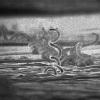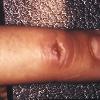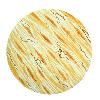

Electron micrograph of Tags: Syphilis View |
Syphilis 24 Tags: Syphilis View |
Syphilis 30 Tags: Syphilis View |
|||||||||
Syphilis is a sexually transmitted disease caused by the spirochetal (spirochete) bacterium Treponema pallidum subspecies pallidum. The route of transmission of syphilis is almost always through sexual contact, although there are examples of congenital syphilis via transmission from mother to child in utero or at birth.Citation neededdate=May 2010
The signs and symptoms of syphilis are numerous; before the advent of serological testing, precise diagnosis (medical diagnosis) was very difficult. In fact, the disease was dubbed the "Great Imitator (great imitator)" because it was often confused with other diseases, particularly in its tertiary stage.Citation neededdate=May 2010
Syphilis can generally be treated with antibiotics, including penicillin. If left untreated, syphilis can damage the heart, aorta, brain, eyes, and bones. In some cases these effects can be fatal.Citation neededdate=May 2010
Icd10: ICD10A50a50-ICD10A53a50
Icd9: ICD9090-ICD9097
Medlineplus: 001327
Emedicinesubj: med
Emedicinetopic: 2224
Emedicine Mult: eMedicine2emerg563 eMedicine2derm413
Meshid: D013587



